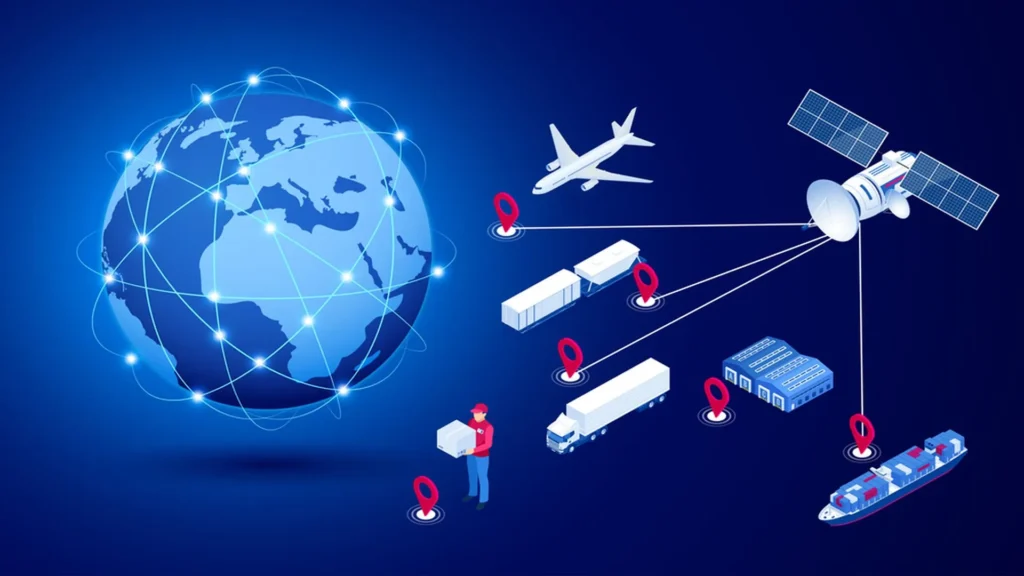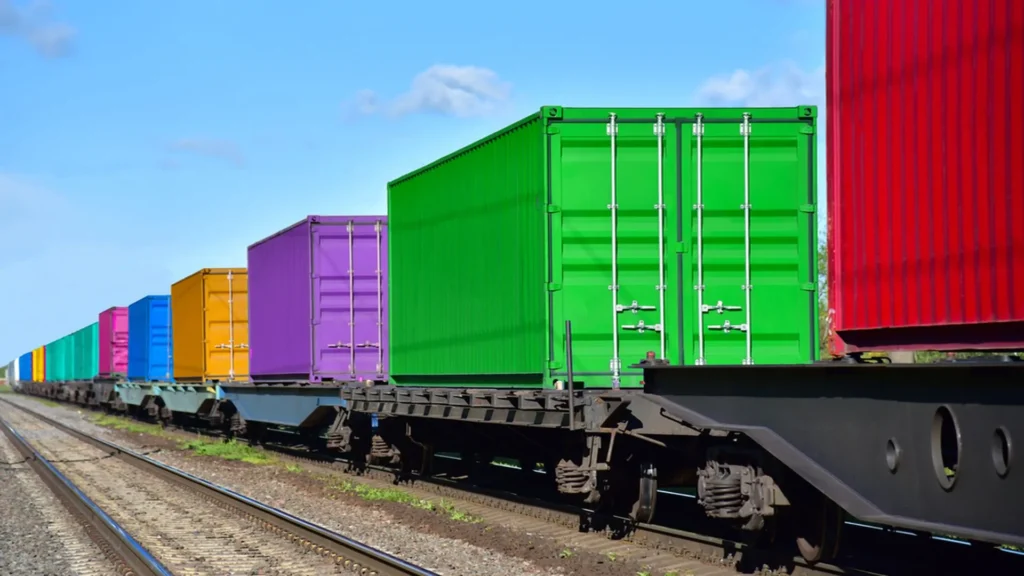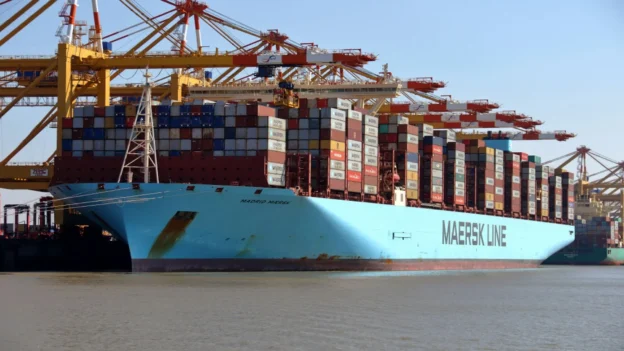Table of Contents
- Introduction
- Supply chain efficiency
- The synergy of multimodal transport in the global economic landscape
- What is the importance of multimodal transportation in the global economy?
- Maritime transport: An essential component of multimodal transport
- Logistics challenges in multimodal transport
- Conclusions
- References
Introduction
Multimodal transportation, the integration of various modes of transport such as sea, rail, air, and land, is changing the global economy. This integrated approach to logistics improves supply chain efficiency, reducing costs, promoting sustainability, expanding access to international markets, and driving technological innovation. This article explores how multimodal transport is transforming the global economy in several significant ways.
Supply chain efficiency
This mode of transport optimizes the supply chain by integrating different modes of transport. This integration reduces transit times and transportation costs, improving logistics coordination.
The flexibility to choose the most beneficial and appropriate combinations of transportation modes enables companies to improve their transportation profits. By taking advantage of cost-effective moving options, business owners can reduce their overall logistics costs. This enables them to offer their products at much more competitive prices, which is essential in a globalized marketplace where competitiveness can determine market share and profitability.
It also facilitates access to global markets, including geographically remote regions. This increased reach opens up international trade opportunities, allowing companies to connect with new customers and suppliers in many countries. Improved access to these markets is important for companies wishing to expand their global footprint and diversify their market presence.
Advances such as real-time monitoring and tracking, process automation, and route optimization have improved the control of global supply chains. These technological innovations enable more proactive management of logistics operations.

The synergy of multimodal transport in the global economic landscape
In today’s interconnected world, the efficiency and fluidity of transportation networks play a key role in shaping the global economic landscape. Multimodal transport, which involves the integration of multiple modes of transportation, has emerged as a key driver of economic growth, facilitating international trade and improving supply chain efficiency. This report explores the synergistic effects of multimodal transport on the global economy, highlighting its benefits, challenges, and future prospects.
Multimodal transport enables the smooth movement of goods across borders, connecting manufacturers, suppliers, and consumers around the world. By combining different modes of transport, such as road, rail, air, and sea, multimodal networks overcome geographical barriers and enhance trade routes. This integration enables the efficient and cost-effective transport of raw materials, intermediate goods, and finished products, fostering international trade and economic cooperation.
The development of multimodal transport infrastructure acts as a catalyst for economic growth and development. Investments in ports, airports, railroads, and roads create employment opportunities, attract foreign investment, and stimulate trade. Efficient multimodal networks enable the movement of goods and people, connecting remote regions to global markets and fostering economic integration. This increased connectivity promotes industrial development, fosters entrepreneurship, and supports the growth of small and medium-sized enterprises.
What is the importance of multimodal transportation in the global economy?
Multimodal transport is fundamental to international trade, enabling the movement of goods across borders and continents by combining different modes of transport such as sea, air, rail, and road. This integrated approach is crucial to ensure an efficient flow of goods in the globalized economy by facilitating the connection between production centers and consumer markets around the world.
By leveraging the strengths of different modes of mobilization, multimodal systems optimize supply chain operations. For example, using cost-effective rail or ocean transportation for long-haul shipments, and efficient road transportation for last-mile deliveries. This optimization reduces total costs, improves delivery times, and increases the responsiveness of the supply chain.
By transferring freight from congested roads to other modes of mobilization such as rail or waterways, the multimodal system helps alleviate traffic congestion and decrease carbon emissions, which contributes to sustainability goals and helps mitigate the environmental impact of transportation operations.
Consolidation of goods at intermodal terminals and the use of standardized containers generate economies of scale, resulting in reduced handling costs and improved operational efficiency. These improvements in profitability benefit both companies and consumers.

Maritime transport: An essential component of multimodal transport
In the contemporary era, shipping remains one of the most crucial modes of transportation worldwide, especially for large-scale international trade of goods. The ability to access new markets and opportunities in a cost-effective manner allows companies to improve and become more competitive continuously. It also encourages companies to expand their reach and access previously inaccessible markets, fostering global connectivity and economic integration.
Modern container ships have a large cargo capacity and can move thousands of containers in a single voyage. This scale of operation reduces unit costs, thus increasing the profitability of companies engaged in international trade.
By using ocean freight, companies can source inputs from a variety of locations, ensuring a stable supply chain and mitigating the risks associated with localized disruptions.
Logistics challenges in multimodal transport
In theory, logistics is defined as the set of resources necessary for the efficient organization of a company, ensuring adequate service and faultless distribution. However, in practice, it becomes a key element from an economic point of view so that all companies in a global market can efficiently supply themselves with the necessary products and tools.
Challenges and trends in the logistics field are fundamental to understand its great relevance in our society. International freight transport faces constant upheaval, being responsible for 10% of global CO₂ emissions and 25% of these emissions in some European countries. Specifically, shipping worldwide contributes 2.7% of these emissions and seeks to decarbonize itself by implementing various strategies that lead them to become more efficient in the use of cleaner fuels.
Likewise, road transport faces challenges due to its high costs, as is the case in Europe, where the price of 95 octane gasoline without taxes is the highest in the eurozone. On the other hand, air mobilization requires greater digitalization to ensure safe transportation and to be able to modify regulations on dangerous goods.
In this regard, the main challenge is to ensure sustainability in every logistics movement, using technological advances as a supporting tool. Despite the aforementioned obstacles, logistics continues to evolve in line with and adapt to various emerging trends.
Conclusions
Multimodal transport is fundamental to international trade, as it enables the movement of goods across borders and continents by combining different modes of transport such as sea, air, rail, and road. This integrated approach is crucial to ensure an efficient flow of goods in the globalized economy by facilitating the connection between production centers and consumer markets around the world.
The proliferation of globalization has been one of the main catalysts for the logistics boom. As companies expand their operations across borders, the need for fast and durable delivery of goods is growing. At the same time, there is increasing emphasis on minimizing the environmental impact of these shipments. Logistics companies are meeting this challenge by implementing environmentally friendly practices, such as leveraging routes to reduce carbon emissions, using fuel-efficient vehicles, and exploring alternative modes of mobilization.
Digital technologies enable real-time monitoring, predictive maintenance, and continuous improvement of multimodal networks. The integration of these technologies allows for maintaining competitiveness in an increasingly interconnected global market.
As industries continue to take advantage of multimodal transportation opportunities, they will be better positioned to navigate the complexities of international trade in order to meet customer demands and achieve sustainable growth.
References
- https://www.oas.org/cip/docs/
- https://www.altexsoft.com/blog/logistics-management-systems-how-warehouse-transportation-and-distribution-software-work

